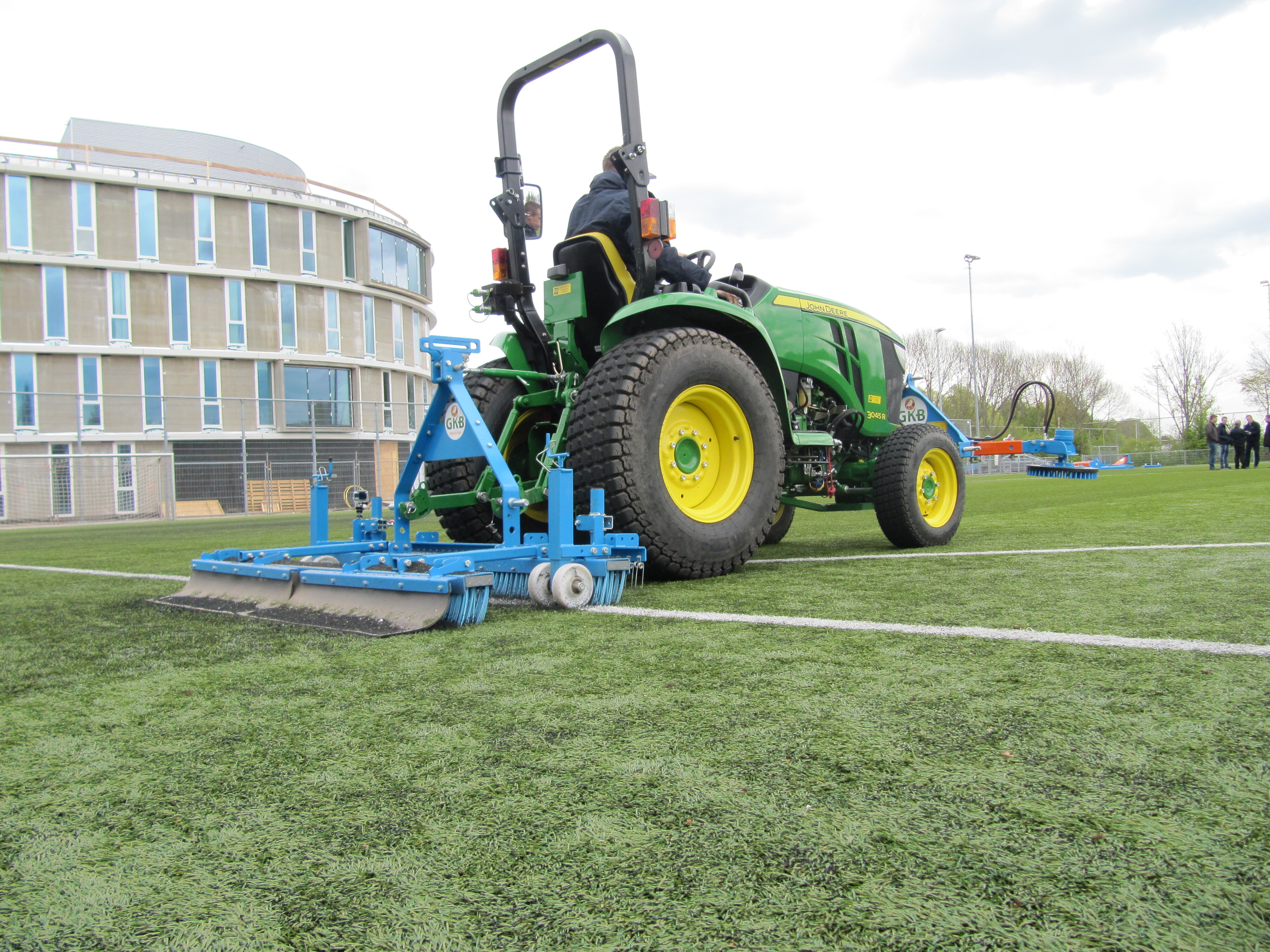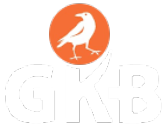Brush, Clean, Protect: Winter Turf Prep
As temperatures drop and play slows on fields and fairways across Canada, it’s easy to assume that turf—especially artificial turf—can take the winter off. But in reality, turf maintenance during the off-season is one of the most important factors in extending the life of your field, keeping performance levels high, and avoiding expensive spring repairs. From community sports pitches to high-end golf courses, taking the right steps in late fall can save time, money, and headaches come spring. In this blog, we’ll explain why winterizing your turf—whether natural or artificial—is essential and walk you through the most effective ways to prepare your surface for the cold season ahead, including expert tips, proven equipment, and must-know maintenance strategies.
Why Winter Turf Maintenance Matters
You wouldn’t leave expensive machinery outside and uncovered all winter, so why do the same with your turf? Artificial turf systems are engineered for durability, but they’re not immune to harsh Canadian winters. Prolonged exposure to freezing temperatures, snow accumulation, and ice buildup can cause:
- Compacted or hardened infill, making the surface stiffer and potentially unsafe.
- Fibre brittleness, increasing the risk of cracking or tearing under pressure.
- Seam damage, particularly in older or poorly maintained fields.
- Drainage issues, as melting snow can carry debris into the system and clog filters or pipes.
- Mould or mildew when organic matter left behind gets trapped under snow or ice.
And while natural turf fields may not face fibre breakdown, they are still susceptible to crown hydration, compaction from snow removal, and damage from winter sports or unplanned traffic. This is why sports turf maintenance—including a targeted plan for winter prep—is critical.
Step 1: Brush Your Turf
Brushing is a core component of turf maintenance, and in late fall, it becomes even more important. Brushing helps lift matted fibres, redistribute infill evenly, and prepare your surface for snow. Using a turf brush designed specifically for artificial turf ensures that fibres stand upright, which aids in draining snowmelt and prevents uneven compaction when snow sits on the surface for weeks or months. Brushing also improves overall aesthetics, which matters if your field or course remains visible to the public or in use by winter programs.
How Often Should You Brush Before Winter?
- High-traffic areas (goal lines, hash marks, tee boxes): once every 1–2 weeks leading up to closure.
- Full fields or greens: at least once before first snow or frost.
Not sure what type of equipment is best for the job? Clean Turf Canada offers a wide range of turf maintenance tools and brushes designed for effective brushing, scarifying, aerating, and cleaning. As a proud Canadian dealer of GKB and SMG, we provide industry-leading solutions for both natural and artificial turf, helping you protect your fields and fairways all winter long.
Step 2: Deep Clean the Surface
Brushing lifts debris, but a proper turf cleaning process ensures that what’s pulled up doesn’t get left behind. Leaves, trash, and other organic materials left on artificial grass can decompose under snow cover, encouraging mould, bacteria, and even foul odours by spring. This buildup not only affects the appearance but can also degrade the turf fibres and infill, compromising the field’s performance and safety. Regular turf cleaning and debris management are crucial steps to preserve turf health and extend the lifespan of artificial turf surfaces, ensuring your fields stay resilient and ready for play when spring arrives.
Key Winter Turf Cleaning Tips
- Use vacuums or turf sweepers to remove loose debris before the first snowfall.
- Check for embedded items– such as bottle caps, athletic tape, or gum–that can bond with the turf during freeze cycles.
- Inspect perimeter drainage and edge seams to help prevent springtime flooding.
- Clear adjacent areas like spectator zones and walkways to minimize debris blowing back onto the field.
If you’re unsure which turf cleaning system or sweeper best suits your turf layout, contact us directly for personalized equipment recommendations.
Step 3: Protect Against the Elements
After brushing and cleaning your turf, it’s important to protect it from winter’s most damaging effects. Snow, ice, and temperature fluctuations are not just inconveniences—they actively contribute to wear and tear. Artificial turf systems are especially vulnerable to:
- Freeze-thaw cycles, which can cause infill displacement and fibre curling.
- Heavy snow loads that lead to surface compression or damage to the shock pad.
- Improper snow removal techniques, such as scraping with metal blades or plowing against seams.
Protection Best Practices
- Avoid the use of salt or chemical de-icers unless they are specifically turf-safe, as these can erode the turf base or backing.
- Use only equipment approved for turf snow removal, such as soft-edged blowers, rubber-tipped sweepers, or specialized turf snow removal tools.
- Monitor snowpack regularly and check for pooling areas after snow melts.
- If possible, install protective covers over high-use or vulnerable areas to reduce wear and damage.
Natural Turf Considerations
While artificial turf dominates many sports facilities, natural grass still requires proper care to ensure a strong comeback in the spring. Key steps for preparing natural turf before winter include:
- Aerating the soil to relieve compaction and improve oxygen flow to the root zone.
- Overseeding to encourage strong root development before the freeze.
- Applying winterizing fertilizer to boost turf resilience against harsh weather and promote early spring growth.
- Topdressing to insulate roots and maintain a smooth, level playing surface throughout the freeze-thaw cycles.
Natural turf also benefits from light brushing, especially on golf fairways or fields with heavy fall traffic, to keep the grass upright and debris-free. These actions help reduce disease pressure, minimize spring damage, and lower the time and cost needed for early-season repairs. Clean Turf Canada offers golf courses a range of equipment specifically designed for natural turf care, including brushes and maintenance tools that help keep turf healthy and ready for winter.
The Cost of Skipping Winter Prep
Skipping turf prep might seem like a time-saver now, but it often leads to more work and higher expenses down the road. Poor winterization can result in several common spring problems, including:
- Uneven infill or fibre matting, which requires time-consuming re-distribution or grooming to restore optimal playability.
- Mould or bacterial growth, often necessitating costly chemical treatments–or, in severe cases, patch replacements to repair damaged areas.
- Drainage failures, particularly around edges and seams, leading to water pooling, frozen patches, and accelerated wear.
- Increased player injuries, caused by hard, uneven, or inconsistent surfaces that pose safety risks.
By investing time and effort into smart winter prep, you not only safeguard the condition and longevity of your turf but also protect your budget from unexpected repair costs and downtime. A well maintained field ensures a smooth transition into the new season–ready for peak performance and player safety.
Frequently Asked Questions About Winter Turf Care
Can I use a regular snow plow on artificial turf?
No. Regular snow plows with metal blades can easily tear seams and damage turb fibres. Instead, always use turf-approved equipment–like rubber-tipped sweepers or snow removal attachments specifically designed for artificial turf–to protect your playing surface.
What should I do if snow starts to melt and pools on the turf?
Standing water can be harmful if it freezes and expands, potentially damaging the turf structure. Make sure your field’s drainage system is clear and functioning properly. If needed, use pumps or turf vacuums to remove excess water promptly and prevent ice buildup.
Do I need to cover the turf during the winter?
Covering isn’t necessary for every field, but it can be beneficial for high-traffic or specialty areas such as soccer goal lines or golf greens. Protective covers help preserve turf quality, minimize wear, and can speed up spring reconditioning, saving time and repair costs.
Spring Starts Now
It may be cold and quiet on your turf right now, but spring success starts with the care you take this winter. Brushing, cleaning, and protecting your artificial or natural turf doesn’t just preserve its appearance–it safeguards performance, enhances safety, and protects your investment. At Clean Turf Canada, we understand the unique challenges posed by Canadian climates. That’s why we offer golf courses a range of premium maintenance equipment and maintenance packages to keep your artificial sports turf in peak condition in all four seasons. Whether you’re preparing for heavy snow or ensuring proper drainage, we’re here to support you every step of the way. Ready to get your turf winter-ready? Contact us for expert advice, equipment recommendations, or to schedule a consultation. Remember–your turf doesn’t take a break, and neither should your maintenance plan.



